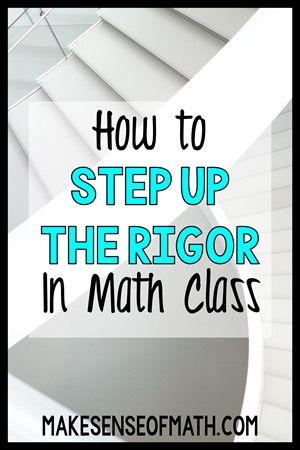Teaching Middle School Math Like a Pro
Starting my third year of teaching I realized it was time to step up my game as a teacher. I finally felt that I had the basics down enough to run my class smoothly, now I wanted to become a better teacher as far as teaching my content. That summer before my third year, I took a week long middle-school math teaching course. My eyes were opened to everything that I was doing wrong. However, I didn't feel upset, I felt excited. I felt so excited that I finally knew how to become a better teacher. My BIGGEST mistake was that I was teaching to my low students. I thought in my head, well if my low students can understand then that will mean that all my students will understand. This thinking is not necessarily wrong, it's just not very effective. You see, for my low students to understand the content I had to significantly decrease the rigor of my classroom teaching, and the rest of the students suffered and were not reaching their potential. I needed to step up the rigor of my classroom. Here are 4 ways that I stepped up the rigor in my math classroom.1 - Believe in your Students
I didn't believe in my lower students. I didn't believe that they would understand if I didn't teach to their level. Wow, was I wrong! Our school director consistently taught us as teachers that if we believe in our students then they will believe in themselves. I finally took this teaching to heart that year. Instead of seeing them as "low" students, I started seeing them as students with lots of potential who could achieve and understand this content. This mental shift was not a one moment occurrence. There were various times throughout the year where I questioned whether or not I should simplify the content. I had to consistently remind myself that they could achieve.
2 - Target your High Middle-Achievers
Instead of targeting my low achievers, I started targeting my high middle-achievers. I gave extensions to my high achievers so they were still being challenged, but I didn't feel comfortable making my high achievers my target audience. I taught at a higher level, and do you know what happened? The lower achievers rose to the challenge.
3 - Vocabulary
Using correct vocabulary may seem as though it is not as important in a math classroom, I highly disagree. From day 1, I started pushing correct vocabulary. I banned the words "it" and "thing" or any other vague word. I forced myself to use correct vocabulary and I forced my students to use correct vocabulary. I did not simplify my math language into non-math terms. If needed, I spoke "above" their math level, because I wanted them to learn math correctly. My students actually enjoyed this change, I believe they felt more intelligent as they started speaking more intelligently.
4 - Open-Ended Tasks
This was a game changer in my classroom. If you do not know what open-ended tasks are let me briefly describe them. Next week I will write about how to write and incorporate open-ended tasks more specifically into your classroom. Open-ended tasks are story problems that contain all/most of the following criteria: have more than one correct answer, students may need to make some assumptions to finish the problem, there is more than one way to solve the problem, students prove their work, real-world application.
I believe that there is a place for fluency practice in your classroom. There is still a need to practice procedures, but DO NOT ignore the need to do extreme reasoning and problem-solving. This practice is where students truly will make sense of math and stretch their brains.










